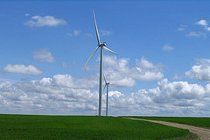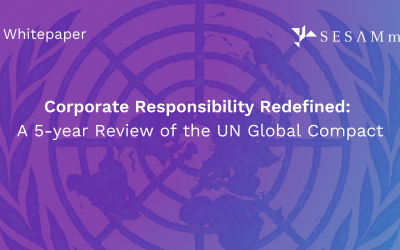Climate-proof your investments, warn asset consultants
Social, economical and political shifts will force diversified investors to increase their focus on assets that are better equipped to deal with the impacts of climate change, states a report.

 Social, economical and political shifts will force diversified investors to increase their focus on assets that are better equipped to deal with the impacts of climate change, states a report.
Social, economical and political shifts will force diversified investors to increase their focus on assets that are better equipped to deal with the impacts of climate change, states a report.
The report, ‘Climate Change Scenarios: Implications for Strategic Asset Allocation’, was released on Tuesday (15 February) by asset consultants, Mercer, which advises big institutional investors, such as pension funds. It concluded that due to climate change, diversified investors will be increasingly forced to re-balance portfolios according to sources of risk, rather than traditional approaches.
“The future cost of carbon emissions increases the longer the policy delay and the less well anticipated and coordinated the policy action is” and a carbon price of $110 per tonne could be expected in this scenario by 2030, says the report.
The report advises that investors bear in mind three areas of change: energy efficiency and technology; societal shifts, such as in health and food security; and shifts in policy, particularly in CO2 emissions reduction.
Diversified investors should look to have 40 per cent of their portfolios in assets that are primed for the impacts of climate change, it suggests.
Impact costs could accumulate to $4 trillion by 2030. Infrastructure is forecast as the highest cost in China and East Asia, while coastal zone protection is the calculated to be the highest cost in Latin America and the Caribbean. Industrial and municipal water supply and riverine flood protection is one of the most expensive threats in Sub-Saharan Africa.
The report warns that weather extremes expected in a warming world, could contribute 10 per cent to portfolio risk by 2030. But investors must not only take account of environmental damage, but anticipate policy changes designed to tackle the climate problem.
Policy measures could increase the cost of carbon emissions by as much as $8 trillion cumulatively, by 2030, states the report.
Simon Dietz, Lecturer in Envionmental Policy, London School of Economics, said convincing investors it is worth investing in green assets “requires increasing the profile of green issues among investors, and in part it requires creating credible green policies, which investors believe will be effective and long-lasting.” He added: “Few green investments are tailored to institutional investors, being too small in scale, too risky, etc.”
Mercer identified a range of “climate sensitive” areas for returns and risk management potential emerging from the most likely climate change scenarios taking place over the next two decades. The report classifies listed shares, infrastructure and private equity as the best asset classes for investment in the recommended industries of timberland, renewable energy, energy efficiency and other sustainable assets.
Investment opportunities in low-carbon technology could be as high as $5 trillion by 2030, the report states.
The report from Mercer suggests that in the most likely of four global policy settings to emerge by 2030, action on climate change would be in place on a regionally divergent basis with some nations taking stronger measures to cut emissions than others, but no more than medium ambition overall.
Image: Loozrboy | Flickr






